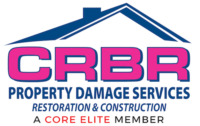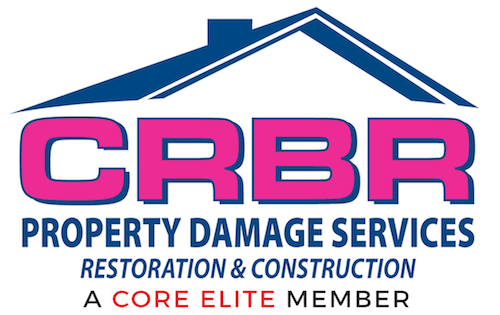Imagine this: a slow, unnoticed leak behind your walls saturates the insulation for weeks. You might not see the damage until your energy bills skyrocket or musty odors creep into your home. Wet insulation isn’t just an inconvenience; it’s a ticking time bomb for mold growth, structural damage, and skyrocketing energy costs. Did you know that damp insulation can lose up to 50% of its effectiveness, making it a prime target for long-term damage?
Water inside walls doesn’t just vanish; it lingers, wreaking havoc on insulation and the surrounding materials. Protecting your wall insulation starts with understanding how to remove water effectively, ensuring it doesn’t lead to bigger problems down the road.
Why Wall Insulation Suffers Most From Water Damage
Insulation is designed to trap air, creating a barrier between your home’s interior and the outside world. Whether it’s fiberglass, foam, or cellulose, insulation’s ability to resist heat transfer depends on staying dry. When water enters the picture, insulation materials can soak up moisture like a sponge, compromising their performance.
Hidden Risks of Wet Insulation
Reduced thermal resistance: Insulation loses its ability to maintain consistent indoor temperatures when wet.
Mold and mildew growth: Damp insulation provides the perfect environment for mold spores to thrive.
Structural issues: Prolonged exposure to moisture can weaken studs, drywall, and other supporting materials.
The problem with water damage in insulation is its stealthy nature. By the time you notice visible signs like wall discoloration or a spike in your utility bills, the damage is often extensive.
The Crucial Role of Professional Water Removal
Addressing water damage in walls isn’t as simple as drying the surface. Water can seep deep into insulation, creating hidden pockets of moisture that are nearly impossible to detect without the right tools. This is where professional water removal services come into play. These services are designed to address water at every level, ensuring that no moisture is left behind.
What Professionals Bring to the Table
Specialized equipment: Infrared cameras and moisture meters pinpoint hidden damp spots that are otherwise invisible.
Comprehensive drying: Industrial dehumidifiers and air movers extract water from deep within walls and insulation.
Preventive measures: Experts treat affected areas with antimicrobial solutions to stop mold before it starts.
By trusting professionals, you’re not just removing water; you’re safeguarding your insulation and home from long-term damage.
Step-by-Step Process for Water Removal in Wall Insulation
Step 1: Locate the Source
Before any removal process begins, it’s critical to identify and stop the water source. Whether it’s a burst pipe, roof leak, or condensation issue, addressing the root cause prevents recurring damage.
Step 2: Assess the Extent of Damage
Inspection tools like thermal imaging help professionals determine how far the water has spread. This step ensures no affected area is overlooked, especially within wall cavities.
Step 3: Remove Standing Water
If the water has pooled, high-powered pumps and vacuums are used to eliminate it quickly. This minimizes the risk of further saturation and reduces drying time.
Step 4: Dry the Area
Drying walls and insulation is a delicate process. Professionals often remove sections of drywall to access insulation directly. Using powerful air movers and dehumidifiers, they ensure every layer is thoroughly dried.
Step 5: Replace Damaged Insulation
In some cases, insulation may be too damaged to salvage. Fiberglass batts, for instance, lose their effectiveness permanently once soaked. Professionals will replace unsalvageable sections with new materials, restoring your home’s thermal protection.
Why DIY Water Removal Often Falls Short
Many homeowners attempt to handle water damage themselves, believing fans and towels are enough. Unfortunately, these methods rarely address the deeper issue: hidden moisture. Without professional tools and expertise, DIY efforts can leave insulation damp, allowing problems like mold to develop unnoticed.
Common DIY Mistakes
Inadequate drying: Household fans lack the power to reach moisture trapped in insulation.
Missed areas: Without moisture meters, it’s easy to overlook water hidden in walls.
Delayed action: Waiting too long to address water damage allows it to spread, increasing repair costs.
When it comes to wall insulation, thoroughness is non-negotiable. Skipping professional help can lead to long-term issues that are far more expensive to fix.
Preventing Water Damage to Wall Insulation
Prevention is always better than cure. While water removal is essential when damage occurs, taking proactive steps can reduce the likelihood of problems in the first place.
1. Maintain Your Roof and Gutters
A well-maintained roof is your first line of defense against water damage. Regularly check for loose shingles, cracks, and clogged gutters to prevent leaks.
2. Seal Openings
Inspect windows, doors, and other openings for gaps where water might enter. Weatherstripping and caulking can provide an added layer of protection.
3. Monitor Indoor Humidity
High indoor humidity can lead to condensation, which seeps into walls over time. Use a dehumidifier to maintain levels between 30% and 50%.
4. Address Plumbing Issues Promptly
A small leak can escalate quickly. Fix dripping pipes and leaking appliances as soon as you notice them.
5. Install Moisture Barriers
Vapor barriers in walls and crawl spaces act as shields, preventing water from infiltrating insulation during high-humidity conditions.
Understanding the Role of a Water Damage Restoration Company
When water damage strikes, time is of the essence. A reliable water damage restoration company provides end-to-end solutions that go beyond just drying walls. These experts assess, remove, restore, and even recommend upgrades to prevent future issues.
Key Services Offered
Comprehensive inspections: Advanced tools identify hidden water damage.
Efficient drying techniques: Industrial-grade equipment speeds up drying while preventing mold growth.
Safe removal of damaged materials: Proper disposal of unsalvageable insulation and drywall prevents cross-contamination.
Restoration planning: Professionals help rebuild and fortify your home against future water events.
Working with experts not only protects your insulation but also ensures your entire home is safe and comfortable.
How Proper Water Removal Benefits Your Home
Timely and effective water removal does more than just protect insulation. It safeguards your home’s structural integrity, maintains energy efficiency, and ensures a healthier living environment. Here are a few key benefits:
Reduced energy costs: Dry, intact insulation maintains your home’s temperature, reducing the load on your HVAC system.
Mold prevention: Addressing moisture quickly prevents mold from taking root in your walls.
Longer-lasting materials: Preventing water damage extends the lifespan of drywall, studs, and insulation.
Improved air quality: Removing damp insulation reduces the risk of allergens and musty odors.
These benefits make professional water removal an investment in your home’s future.
Closing Thoughts: Protect Your Insulation, Protect Your Home
Wall insulation plays a crucial role in your home’s comfort and efficiency, but it’s highly vulnerable to water damage. Understanding how to address and prevent moisture problems ensures that this hidden layer remains effective for years to come. The next time water finds its way into your walls, remember that acting quickly with professional help isn’t just a choice—it’s the best way to safeguard your home’s health and value.

